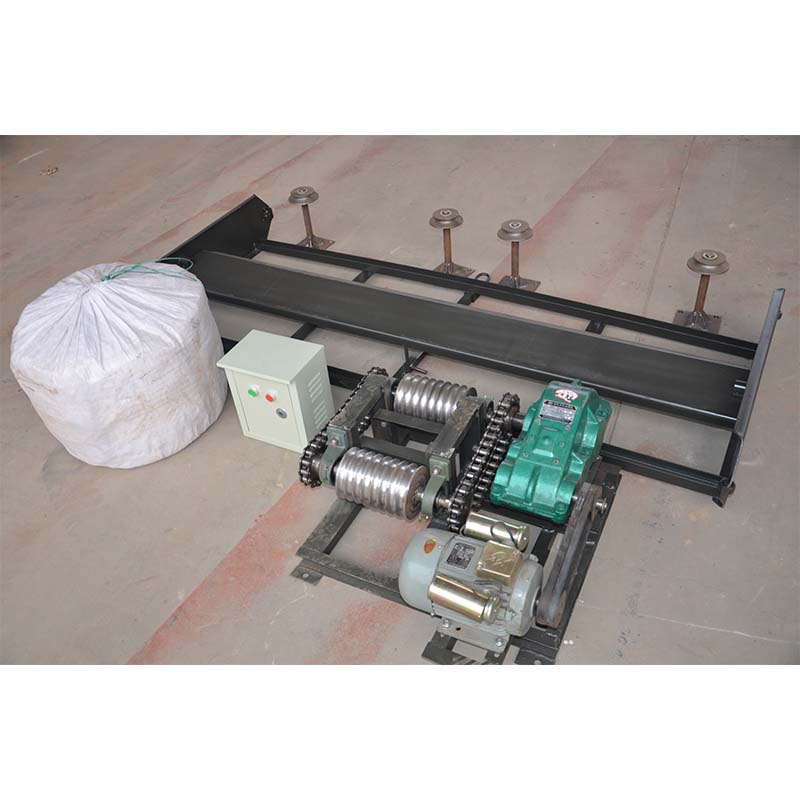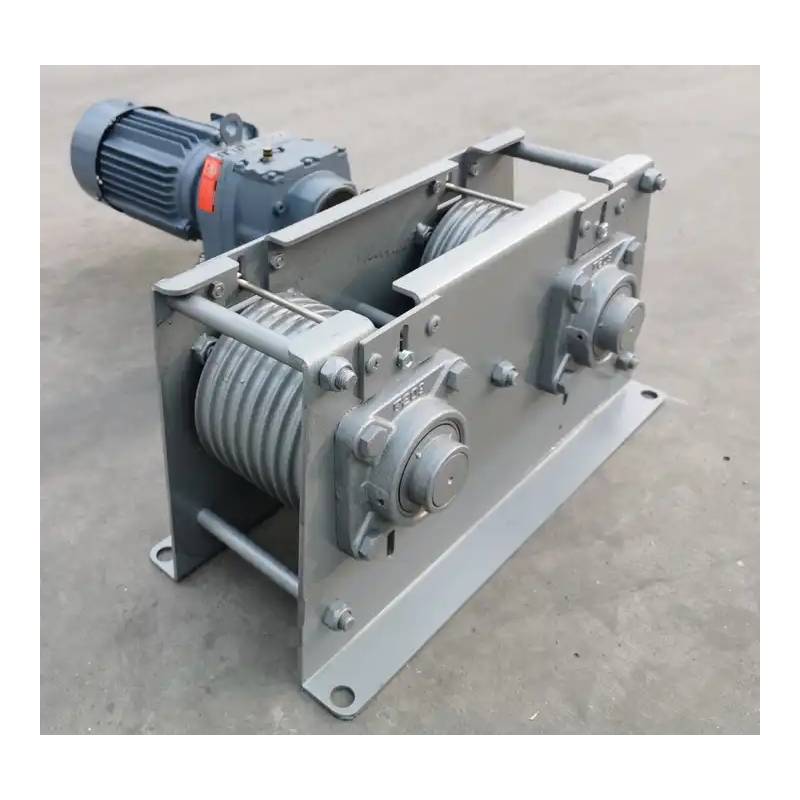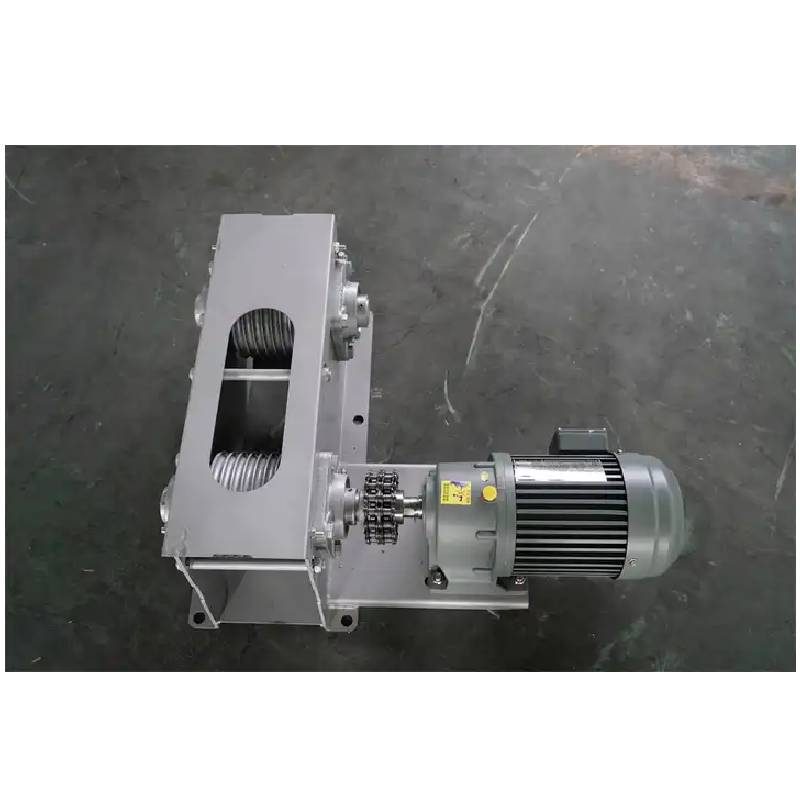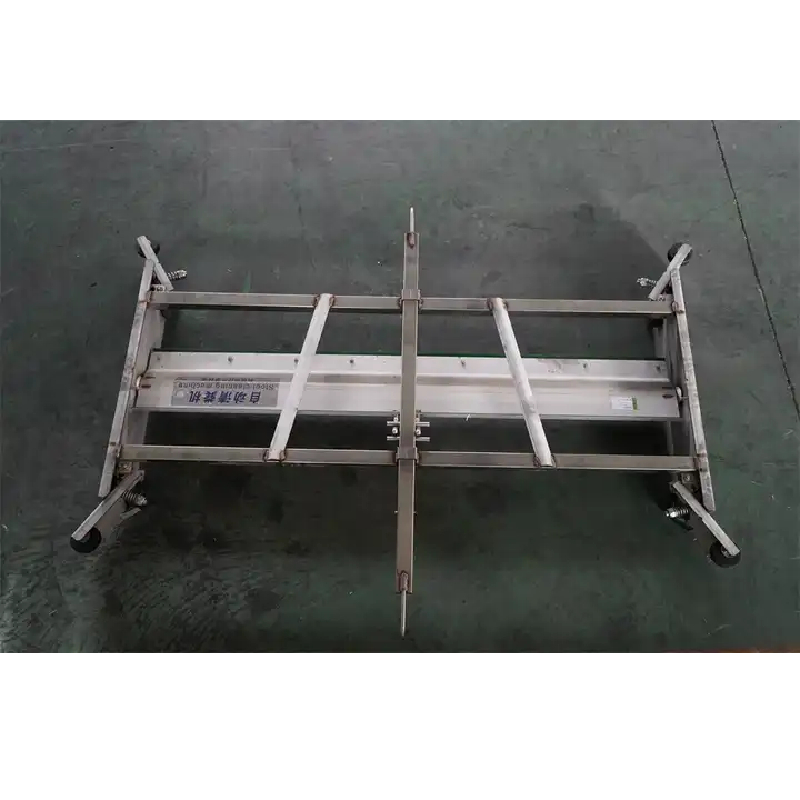Manure Belt Cleaning System: Efficient, Automated, Hygienic
Sep . 12, 2025 08:00 Back to list
Manure Belt Cleaning System: Efficient, Automated, Hygienic
Transforming Livestock Waste Management: Industry Trends in Manure Belt Cleaning Systems
The modern animal agriculture sector faces increasing pressure to optimize operational efficiency, enhance animal welfare, and comply with stringent environmental regulations. Effective waste management is paramount, making advanced cleaning solutions indispensable. The demand for sophisticated technologies like the manure belt cleaning system is growing rapidly, driven by these factors. These systems are critical for maintaining hygienic breeding environments, particularly in large-scale pig and poultry farms.
Key industry trends highlight a shift towards automation, sustainability, and data-driven management. Farmers and facility managers are seeking solutions that not only reduce labor costs but also improve air quality, mitigate disease risk, and convert waste into valuable resources such as biogas or compost. The integration of smart sensors and IoT capabilities for real-time monitoring of waste accumulation and system performance is also gaining traction, moving towards predictive maintenance and optimized cleaning cycles. Furthermore, there's a heightened focus on the durability and corrosion resistance of components, recognizing the harsh conditions inherent in agricultural environments. This evolution demands robust equipment designed for longevity and minimal downtime, contributing significantly to a more sustainable and profitable operation in the breeding environment equipment sector.

Technical Specifications of Manure Scraper Cleaning Machines
A robust and efficient manure belt cleaning system is engineered with precision to handle the demanding conditions of livestock farming. Understanding the core technical parameters is crucial for B2B decision-makers assessing system suitability and performance. These systems are designed to provide continuous and effective removal of animal waste, directly impacting farm hygiene and operational efficiency.
Below is a table detailing typical specifications for a high-performance Manure Scraper Cleaning Machine, engineered for durability and reliability in challenging agricultural settings. These specifications are indicative of the quality and engineering standards applied to modern breeding environment equipment.
| Parameter | Specification |
|---|---|
| Applicable Livestock | Pigs (various stages), Chickens (layers, broilers) |
| Motor Power | 0.75 kW - 2.2 kW (depending on system length and load) |
| Voltage | 380V / 220V, 3-phase / single-phase (customizable) |
| Scraper Material | High-strength Manganese Steel or Galvanized Steel |
| Chain Material | Hot-dip galvanized steel, high-tensile strength |
| Cleaning Efficiency | Up to 98% manure removal per cycle |
| Operating Speed | Adjustable, typically 8-12 meters/minute |
| Max Cleaning Length | Up to 150 meters per unit (multiple units for longer sheds) |
| Control System | Automatic timer control, manual override, fault detection |
| Service Life (Estimated) | 10-15 years with routine maintenance |

Detailed Process Flow: Manufacturing a High-Performance Manure Belt Cleaning System
The reliability and longevity of a manure belt cleaning system are directly attributable to its meticulously engineered manufacturing process. From raw material selection to final assembly and testing, each step adheres to rigorous quality control standards, ensuring the system performs optimally in challenging agricultural environments. While the target industries for general cleaning systems can include petrochemical or metallurgy, the principles of robust engineering and material science are universally applied to guarantee superior performance in breeding environment equipment.
1. Material Procurement & Inspection
High-grade materials are essential for corrosion resistance and structural integrity. Common materials include:
- Stainless Steel (SUS304, SUS316): Used for critical components exposed to corrosive manure, such as scraper blades, frames, and fastening hardware, offering superior resistance to chemical degradation.
- Hot-Dip Galvanized Steel: Employed for structural frames, chains, and other components requiring high strength and effective rust protection in humid, ammonia-rich environments.
- High-Density Polyethylene (HDPE) or Ultra-High Molecular Weight Polyethylene (UHMW-PE): Utilized for wear strips and guide rails to minimize friction, reduce noise, and prolong the service life of moving parts.
- High-Strength Alloy Steels: For drive shafts, gears, and motor housings, ensuring robust power transmission and durability.
All incoming materials undergo strict quality control (QC) inspections, verifying material composition, mechanical properties, and compliance with industry standards like ASTM and EN.
2. Component Manufacturing
- Cutting & Shaping: Precision laser cutting and CNC plasma cutting are used for metal sheets and profiles, ensuring high dimensional accuracy for frames and scraper components.
- Bending & Forming: Hydraulic press brakes precisely bend metal parts into their required geometries, maintaining structural integrity.
- CNC Machining: Critical components like drive shafts, sprockets, and bearing housings are manufactured using advanced CNC machining centers. This ensures tight tolerances, optimal surface finish, and consistent performance, reflecting standards similar to those in precision engineering sectors.
- Casting & Forging (for specific parts): For highly stressed parts or components with complex geometries, casting (e.g., for certain gearbox housings) or forging (e.g., for high-strength chain links) may be employed, enhancing material strength and fatigue resistance.
- Welding: Automated robotic welding or skilled manual welding techniques (MIG/MAG) are utilized for frame assembly and component joining. Welds are inspected for penetration, absence of defects, and compliance with ISO 3834 standards, ensuring structural integrity in humid and corrosive environments.
3. Surface Treatment & Protection
- Galvanization: Steel components undergo hot-dip galvanization to provide a robust, long-lasting protective zinc coating, crucial for corrosion resistance against ammonia and other acidic compounds in manure. This process adheres to ISO 1461 standards.
- Powder Coating: Certain components may receive electrostatic powder coating for an additional layer of protection against corrosion, abrasion, and aesthetic finish.
- Polishing & Passivation: Stainless steel parts are polished and passivated to enhance their inherent corrosion resistance by forming a passive oxide layer.
4. Assembly & Integration
Components are assembled by experienced technicians, integrating mechanical, electrical, and control systems. This includes mounting motors, gearboxes, scraper blades, chains, and control panels. Electrical wiring adheres to relevant safety standards (e.g., IEC, UL) ensuring reliable operation.
5. Rigorous Testing & Quality Assurance
Before dispatch, every manure belt cleaning system undergoes comprehensive testing to guarantee performance, safety, and durability:
- Functional Testing: The entire system is run through multiple cleaning cycles under simulated load conditions to verify motor operation, scraper efficiency, chain tension, and control system functionality.
- Safety Standards Compliance: Electrical safety (insulation resistance, grounding) and mechanical safety features (emergency stops, guards) are checked against relevant standards (e.g., CE marking directives, ANSI B11 standards for machinery safety).
- Durability Testing: Key components may undergo accelerated life testing to predict long-term performance and identify potential failure points.
- Noise & Vibration Analysis: Systems are checked to ensure operational noise and vibration levels are within acceptable limits, improving animal welfare and worker conditions.
The final product is designed for an estimated service life of 10-15 years, demonstrating advantages such as energy saving through optimized motor-to-scraper design and exceptional corrosion resistance due to material selection and surface treatments. The primary target industry remains agricultural animal husbandry, specifically large-scale pig and chicken farms, for which this specialized breeding environment equipment is designed.

Application Scenarios and Technical Advantages
The deployment of a modern manure belt cleaning system extends across various animal farming operations, providing a foundational element for efficient and humane livestock management. Its versatility and robust design make it indispensable for fostering superior breeding environment equipment.
Typical Application Scenarios:
- Large-Scale Poultry Farms: Essential for layer and broiler houses, where high bird densities necessitate frequent and thorough manure removal to control ammonia levels, prevent respiratory issues, and reduce the incidence of footpad dermatitis. The system efficiently collects manure from beneath cages or slatted floors, minimizing pathogen spread and improving air quality.
- Intensive Pig Farming: In farrowing, gestation, and finishing units, the scraper system effectively removes waste from concrete slatted floors or designated collection channels. This prevents the buildup of harmful gases and ensures a cleaner, healthier living space for pigs, reducing stress and improving growth rates.
- Dairy Calf Rearing Facilities: While less common than belt systems for larger animals, scraper systems can be adapted for calf housing, particularly in group pens where consistent hygiene is critical for preventing diseases like scours.
- Duck and Goose Farms: Similar to poultry, these operations benefit from automated waste removal to manage the significant volume of droppings, promoting cleaner waterways and reducing environmental impact.
Key Technical Advantages:
- Enhanced Animal Health & Welfare: By continuously removing manure, the system drastically reduces ammonia concentrations and other harmful gases. This minimizes respiratory diseases, reduces stress, and fosters a more comfortable environment, leading to better animal productivity and lower mortality rates. It also curbs the proliferation of flies and other pests.
- Significant Labor Cost Reduction: Automation replaces manual scraping, freeing up farm personnel for other critical tasks. This translates into substantial savings in labor expenses and increases overall operational efficiency.
- Improved Manure Quality for Further Processing: The system collects manure in a concentrated form, typically with lower moisture content compared to flushed systems. This makes the waste more suitable for composting, anaerobic digestion (biogas production), or direct land application, enhancing its value as a fertilizer and reducing processing costs.
- Corrosion Resistance & Longevity: Constructed from galvanized steel, stainless steel, and high-strength plastics, components are specifically chosen for their ability to withstand the highly corrosive and abrasive farm environment. This ensures a long service life and minimal maintenance requirements, even when exposed to potent acids and alkalis in manure.
- Energy Efficiency: Modern scraper systems are designed with optimized motor configurations and low-friction components, resulting in minimal power consumption during operation. Variable frequency drives (VFDs) can further enhance energy saving by allowing adjustable operating speeds.
- Environmental Compliance: Effective manure management directly contributes to compliance with environmental regulations regarding water quality, air emissions, and waste disposal. By minimizing runoff and controlling odors, these systems support sustainable farming practices.
- Modular and Scalable Design: Systems are often modular, allowing for easy expansion or adaptation to different shed layouts and sizes, making them a flexible solution for growing operations.

Vendor Comparison: Choosing the Right Manure Belt Cleaning System
Selecting the optimal manure belt cleaning system is a strategic decision for any large-scale livestock operation. While many manufacturers offer solutions, key differentiators lie in material quality, technical innovation, customization capabilities, and after-sales support. A thorough vendor comparison helps identify the best fit for specific operational requirements and long-term value in breeding environment equipment.
The table below provides a comparative overview of typical features and service offerings across different tiers of suppliers, highlighting what discerning buyers should look for when investing in a durable and efficient manure management solution, including consideration for slaughter washer and cleaner synergies.
| Feature/Criterion | Leading Manufacturer (e.g., Yize Machine) | Mid-Tier Supplier | Budget/Entry-Level Supplier |
|---|---|---|---|
| Material Quality | High-grade SUS304/316, Hot-dip Galvanized Steel (ISO 1461), UHMW-PE, High-strength alloy steel | Galvanized steel (variable quality), mild steel, standard plastics | Mild steel (painted), basic plastics, lower grade galvanized steel |
| Manufacturing Process | CNC machining, robotic welding, precision casting, ISO 9001 certified production | Standard machining, manual welding, less stringent QC | Basic fabrication, minimal precision processes |
| Customization & Integration | Extensive customization for shed layout, waste processing integration, smart controls. | Limited customization options, basic integration capabilities. | Standardized models only, difficult integration. |
| Control System | PLC-based with fault diagnostics, remote monitoring (optional), HMI. | Timer-based, basic safety features, manual override. | Simple manual controls. |
| Warranty & Service Life | 2-5 years comprehensive warranty, 10-15 years estimated service life. | 1-2 years limited warranty, 5-8 years estimated service life. | 6 months - 1 year, 2-5 years estimated service life. |
| After-Sales Support | Global network, technical support, spare parts availability, training. | Regional support, limited spare parts. | Minimal support, reliance on local technicians. |
| Certifications | ISO 9001, CE, various national safety standards. | Basic CE (if applicable), internal quality checks. | Few to no external certifications. |
Leading manufacturers distinguish themselves through superior engineering, use of advanced materials, and a commitment to providing integrated, long-term solutions that minimize total cost of ownership (TCO) for complex agricultural operations.

Customized Solutions and Application Case Studies
Recognizing that no two agricultural operations are identical, leading providers of manure belt cleaning system solutions offer extensive customization options. This flexibility ensures seamless integration with existing farm infrastructure and optimizes performance for specific livestock types, shed designs, and waste management goals. From design modifications to specialized materials and integrated control systems, tailored solutions are a hallmark of advanced breeding environment equipment.
Customization Capabilities:
- Dimension and Layout Adaptations: Systems can be designed to fit varying shed lengths, widths, and multi-tier cage systems. This includes custom chain lengths, scraper widths, and drive unit placements.
- Material Specifications: Depending on the specific pH levels of manure or local environmental factors (e.g., coastal salinity), different grades of stainless steel (e.g., SUS316 for enhanced corrosion resistance) or specialized coatings can be incorporated.
- Automated Control Systems: Integration with existing farm management systems, customizable cleaning schedules, remote monitoring capabilities, and fault diagnosis systems can be implemented. This includes sensors for ammonia levels or manure buildup to trigger cleaning cycles automatically.
- Waste Handling Integration: Custom discharge points and conveyor systems to seamlessly transfer manure to compost facilities, anaerobic digesters, or storage pits, optimizing the overall waste processing workflow.
- Power and Safety Standards: Electrical components can be adapted to specific regional voltage requirements and safety certifications (e.g., UL for North America, CE for Europe).
Real-World Application Case Studies:
Case Study 1: Large-Scale Layer Farm, Southeast Asia
Client Profile: A facility housing 500,000 laying hens across 10 sheds, facing challenges with high ammonia levels, significant labor costs for manual cleaning, and increasing environmental regulations.
Solution Implemented: Installation of an automated manure belt cleaning system in each shed, totaling 1500 meters of scraper chain systems. The system was customized with heavy-duty galvanized chains and UHMW-PE wear strips, optimized for continuous daily operation. Control panels were integrated into a central farm management system, allowing for scheduled and on-demand cleaning.
Results Achieved:
- Ammonia Reduction: Achieved a verifiable 70% reduction in average ammonia concentrations within the laying houses.
- Labor Savings: Reduced manual cleaning labor by 85%, reallocating staff to egg collection and animal health monitoring.
- Egg Production Increase: Noted a 2% increase in overall egg production due to improved bird health and reduced stress.
- Environmental Compliance: Fully compliant with new local air quality regulations, avoiding potential fines.
Case Study 2: Intensive Pig Farrowing & Gestation Unit, Europe
Client Profile: A state-of-the-art pig farm with 2,000 sows, focused on improving sow welfare and maximizing litter sizes. Existing manual cleaning was inefficient and disruptive to the animals.
Solution Implemented: A specialized manure scraper cleaning machine system designed for slatted floors in farrowing and gestation crates. The system featured slow-speed operation to minimize disturbance and a robust stainless steel scraper blade for thorough cleaning. The discharge system was integrated with a covered auger conveyor leading to an anaerobic digester.
Results Achieved:
- Improved Sow Health: Significant reduction in hoof and skin lesions, leading to a 5% decrease in veterinary costs related to hygiene.
- Litter Size Enhancement: A noticeable improvement in piglet vitality and average litter size, attributed to a cleaner and less stressful environment.
- Biogas Production Optimization: Consistent supply of high-quality, pre-concentrated manure to the digester, increasing biogas yield by 15%.
- Operational Efficiency: Cleaning cycles completed automatically overnight, ensuring a fresh environment for animals at all times without human intervention during peak hours.

Trustworthiness and Support: FAQ, Lead Time, Warranty, and After-Sales
Establishing trust with B2B clients requires transparency, clear commitments, and robust support systems. For critical breeding environment equipment like a manure belt cleaning system, understanding the service lifecycle, from initial inquiry to long-term operation, is paramount. This section outlines key aspects of client support and operational details.

Frequently Asked Questions (FAQ):
Q1: What types of livestock farms can benefit from this manure scraper cleaning machine?
A1: Our systems are primarily designed for large-scale pig farms (farrowing, gestation, finishing units) and poultry farms (layer, broiler, breeder houses). They are adaptable for other livestock facilities requiring efficient waste management.
Q2: How does the system handle different manure consistencies?
A2: The robust scraper design and powerful drive units are engineered to handle varying manure consistencies, from semi-liquid to more solid waste. The material choices, like high-strength steel, ensure effective scraping without wear issues.
Q3: Is the system energy efficient?
A3: Yes, our systems feature optimized motor power for efficient operation. With proper scheduling and optional variable frequency drives, energy consumption is minimized, leading to operational savings.
Q4: What is the typical installation time for a new system?
A4: Installation time varies based on farm size and complexity. For a standard multi-shed poultry farm, installation can range from 1 to 3 weeks, often requiring minimal disruption to ongoing operations. Our technical team provides detailed installation guides and on-site supervision if required.
Q5: Can the system be integrated with existing waste treatment facilities?
A5: Absolutely. Our manure belt cleaning system is designed with flexible discharge options to seamlessly connect with existing conveyors, augers, composting units, or anaerobic digesters, optimizing the entire waste processing chain.
Lead Time and Fulfillment Details:
Standard lead time for manufacturing and dispatch of a typical manure belt cleaning system ranges from 4 to 8 weeks, depending on system complexity and current production schedules. Custom larger projects may require 8-12 weeks. We maintain robust supply chain management to ensure timely delivery. Upon order confirmation, clients receive a detailed project timeline, including key milestones from design finalization to factory acceptance testing and shipment.
Warranty Commitments:
We stand by the quality and durability of our Manure Scraper Cleaning Machines. All systems come with a comprehensive 2-year warranty covering manufacturing defects and component failures under normal operating conditions. Extended warranty options for critical parts, such as motors and gearboxes, are available. Our commitment ensures peace of mind and protection for your investment in breeding environment equipment.
Customer Support and After-Sales Service:
Our dedication to client success extends far beyond the point of sale. We offer extensive after-sales support including:
- Technical Assistance: A dedicated team of technical experts is available via phone and email to troubleshoot issues, provide operational guidance, and answer any queries.
- Spare Parts Availability: We maintain a comprehensive inventory of genuine spare parts, ensuring rapid dispatch to minimize downtime.
- Maintenance Training: On-site or remote training sessions can be arranged for your operational staff on routine maintenance, system adjustments, and optimal usage practices.
- Preventative Maintenance Programs: We offer tailored service agreements to conduct periodic inspections and preventative maintenance, maximizing system longevity and performance.
- Global Network: Through our network of certified partners and distributors, we ensure localized support and efficient service delivery wherever your operation is located.
References
- Smith, J. (2021). "The Role of Automated Manure Removal in Sustainable Poultry Farming." Journal of Agricultural Engineering Research, 45(2), 112-128.
- Environmental Protection Agency (EPA). (2019). "Managing Animal Manure: Environmental Regulations and Best Practices." EPA Document No. 832-B-19-001.
- Food and Agriculture Organization of the United Nations (FAO). (2020). "Livestock Waste Management Systems for Small and Medium Farms." FAO Animal Production and Health Paper 183.
-
Efficient & Sustainable Chick Brooding Cage Systems for Modern Poultry Farming
NewsNov.24,2025
-
Cage for Chick: Optimizing Poultry Care for Global Food Security
NewsNov.23,2025
-
Baby Chicks Cage – Global Solutions for Sustainable Poultry Farming
NewsNov.22,2025
-
Baby Chick Cage: The Essential Guide to Brooding Solutions for Poultry Farmers
NewsNov.22,2025
-
Understanding Square Grain Silos: Global Impact, Benefits, and Trends
NewsNov.21,2025
-
Automatic Feeding Line System-Anping County Yize Metal Products Co., Ltd.|Automated Feeding&Watering
NewsNov.21,2025






